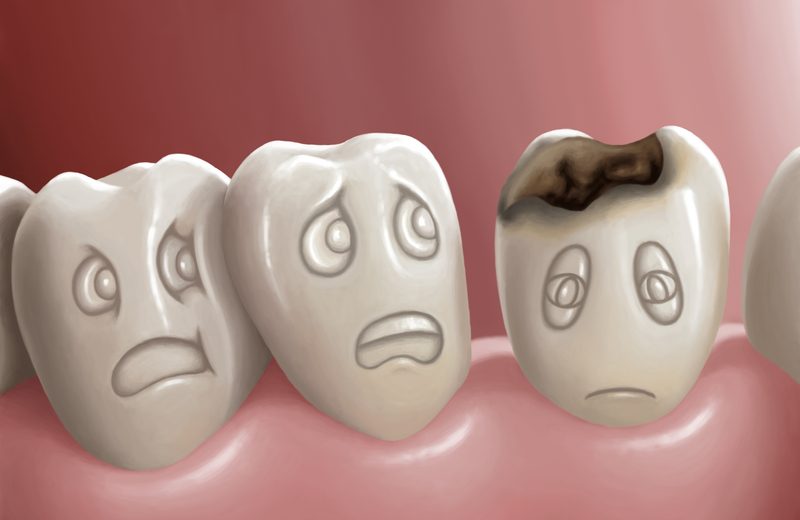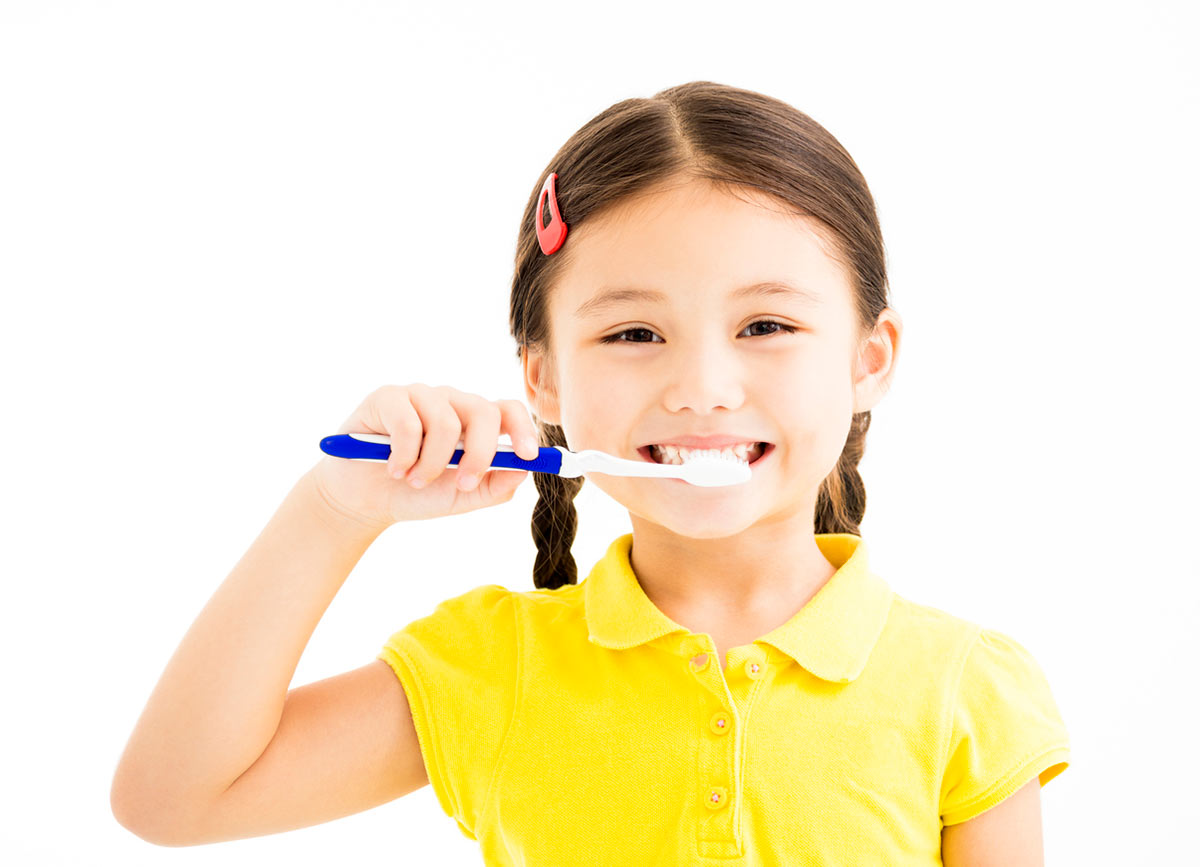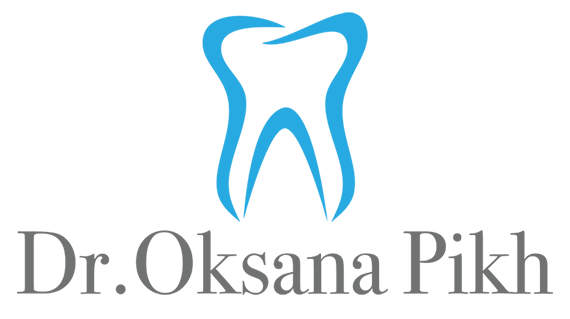Beginning dental care early is important for your child’s health and to keep their teeth strong and prevent from decaying (cavities). It is important to keep baby teeth healthy as they allow babies to eat and speak clearly. Baby teeth also guide permanent adult teeth into the proper position, so it is necessary to keep your child’s teeth clean. Here are a few things any parent should know about dental care for your child.
Teething
Most children begin teething at about 6 months of age. Children should have all of their baby teeth once the are 3 years of age. The bottom front teeth usually appear first, followed by the top front teeth. In total, 20 teeth should appear – 10 in the top jaw and 10 in the bottom jaw.
Teething may cause some discomfort, making your baby fussy. They may feel better by chewing on a clean, chilled teething ring, teething toy, or clean wet face cloth. Teething cookies or biscuits are not a good choice because they may contain sugar and can stick to your baby’s teeth and cause tooth decay.
Make sure to check with your doctor, dentist or health care provider before using teething ointments, gels or tablets, or any other teething items.
Tooth decay/ Cavities
Tooth decay is the breakdown, or destruction, of tooth enamel. Enamel is the hard outer surface of a tooth. This leads to cavities, which are holes in the teeth.

Once your child has teeth, they are at risk for tooth decay. Tooth decay is caused by the bacteria that normally reside in the mouth. This happens when foods containing carbohydrates (sugar and starches) are stuck in the teeth, such as: milk, soda, raisins, candy, cake, fruit juices, cereals, and bread. Bacteria that normally live in the mouth change these foods, making acids. The combination of bacteria, food, acid, and saliva form a substance called plaque that sticks to the teeth. Which overtime, it eats away at the tooth enamel and causes tooth decay. 
Without treatment, decay can spread deeper into the tooth, which then causes pain and infection, and can even damage to the underlying adult tooth. This may also lead to the removal of the baby teeth.
There are many signs of tooth decay– Chalky white spots on a child’s tooth, light brown discoloration, a small hole, or a darkening of the entire tooth — all can be early signs of tooth decay which can result in pain, infection or tooth loss. If you notice these signs on your child’s teeth make sure you check with your dentist or health care provider.
What contributes to tooth decay
- Frequent Consumption of sugary or sticky foods or beverages
- The use of sippy cups or baby bottles at bedtime
- Not brushing your child's teeth.
Good dental care includes cleaning and checking your child’s teeth and mouth every day. Lift the lip so you can see along the gum line when cleaning and look for white or brown spots which may be early signs of tooth decay.
How is tooth decay treated
The type of treatment for your child depends symptoms, age and general health, and depends of the condition of the tooth.
Generally treatment requires removing the decayed part of the tooth and replacing it with a filling. These fillings may be made out of silver, fine glass powders, acrylic acids, or resin. They are often tooth-colored. Some instances they may require a crown which is placed as a cover on the tooth to protect it.
How to prevent it
Good dental care includes cleaning and checking your child’s teeth and mouth every day. Lift the lip so you can see along the gum line when cleaning and look for white or brown spots which may be early signs of tooth decay.
You should clean the gums even before your child starts teething. Using a soft baby toothbrush or wet face cloth to clean.
When teeth start to come in, use a toothbrush with a smear (size of a grain of rice) of fluoride toothpaste. Brush your child’s teeth in the morning and especially at bedtime. Once your child turns 3, brush your child’s teeth using a “pea-sized” amount of fluoride toothpaste on a soft child’s toothbrush. Fluoride toothpaste used in these amounts is considered safe and effective against tooth decay.
Offer water to drink between feedings. Water is the best choice between regular feeding times and for thirst. Introduce your baby to using a lidless cup between 6 and 9 months of age.
If you have any questions regarding this article, or anything comments you have about what you just read. Please feel free to contact us!
